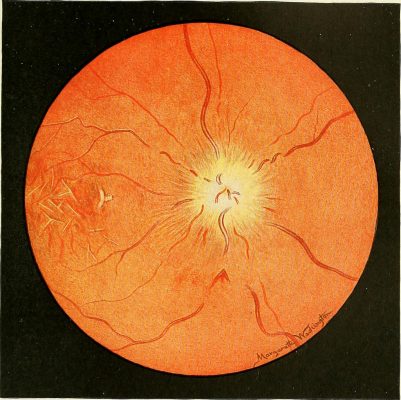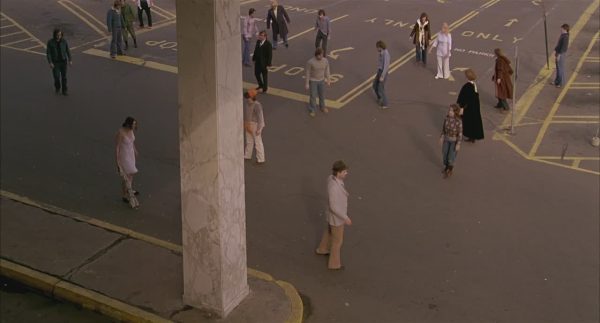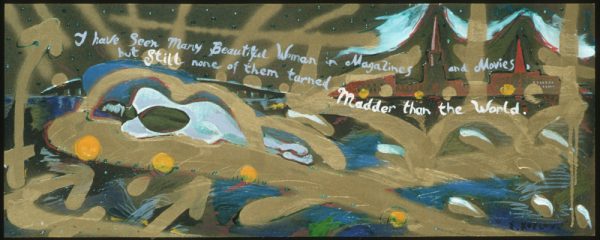In his 1970 essay ‘The Concept of Character in Fiction’, the late William H. Gass wrote that those entities we call characters are often curiously incorporeal. ‘I have known many who have passed through their stories without noses, or heads to hold them, others have lacked bodies altogether, exercised no natural functions … and apparently made love without the necessary organs.’ This is in no way a failing in fiction; the making of character is an art of subtraction – like most arts. And if we can accept characters who are only thought, feeling or sensibility, then we ought not cavil at those who are all biology, all of the time. Such are the enigmatic personae in David Hayden’s austerely carnous short stories: often, they seem to be made of no more than names and troubled flesh.
There are precedents, of course, for characters whose adventures mostly happen in their guts, on their skin, along the subtle channels of the nerves. Certain stories by Kafka, Beckett’s prose, latterly the violent involutions of body and language in the work of Ben Marcus. These writers invent a somatic fiction whose protagonists are ever alert to, and appalled by, the things their bodies contain, or get up to. With Hayden, a kind of grotesque – you could not call it horror, though it is sometimes horrific – is sutured to absurdist narratives about mundanely mysterious characters in dreamlike settings. Darker With the Lights On involves a daring abdication of much convention that survives in ‘experimental’ fiction.
‘Egress’, the first of twenty stories, is typically fantastic and visceral – scatological, even. The narrator occupies an office amid the clouds, appears to hover weightless above a city, pissing and shitting on the populace below: ‘I rolled over, unzipped and sprayed onto the street with relief, without regret.’ And elsewhere: ‘Sir Arthur throughout his life carefully selected a representation of his most memorable movements which his valet carefully dried in the sun before wrapping in Japanese tissue paper.’ In other stories, bodily anxiety prevails, a hypochondriac vigilance lest parts detach and are found clogging the sink. In ‘Memory House’ the narrator wanders through an oneiric palace of recall (or is it forgetting?) and suffers from this perennial dream-fret: ‘I feel like my teeth are going to fall out. My teeth fall out and then fall back in again.’
It’s not only bodies, but inanimate objects too, that appear in Hayden’s fiction to supply or supplant his characters’ motives and emotions. Gass again: ‘anything … which serves as a fixed point, like a stone in a stream or that soap in [Leopold] Bloom’s pocket, functions as a character.’ ‘The Auctioneer’ concerns a protagonist who has seen most of his possessions sold off; but a residue of stuff remains and, Beckett-like, he would rather be done with all:
‘I feel the need to review my few remaining things and throw more of them away. The last rug, my dictionary, the corner table with its lamp; they have started to oppress me tonight and they must go.’
As the narrator of ‘Egress’ puts it: ‘everything seemed to frangible and impermanent.’
At their most skewed and suggestive, Hayden’s stories employ a repertoire of more or less alarming motifs, repeated and adapted. His characters are forever being seized by obscure forces and flung up into the air: ‘I could see that the ground was farther away from me than I could have expected it to be. … Andy realises that the man is being lifted into the air by a bale of hay.’ Bizarre and sinister rituals are enacted in ‘Limbed’: women fight naked on a platform and bleed milk – a crowd sucks it up. In the same story, a tower that is also a giant axe descends and chops men to pieces.
All of this is rendered in prose that is by turns laconically precise and extravagant, recondite, floridly metaphoric. There are images in Darker With the Lights On that vex the mind and will not go away, such as the moment in ‘Memory House’ when the narrator sees ‘a frozen lark fall at great speed before exploding on the concrete path, scattering its music all around the garden in numberless, glittering fragments.’ Over the course of twenty stories, such moments are perhaps ill-matched too many times by an awkwardness it is hard to read as essential to Hayden’s estranging style. It seems rather a species of inelegant variation, which obtrudes sometimes at the base level of word choice. As for instance: ‘Birds with mighty, cloud-spanning wings gyre above.’ Never mind W. B. Yeats, it is hard to read ‘gyre’ without also hearing Lewis Carroll’s less elevated ‘gimble’. Or how about: ‘The leaves turned sere, descending a scale of gold-orange-yellow-brown and flopped in fat, spicy drifts.’ It would be easier to defend ‘sere’ for ‘dry’ if it were not also for ‘flopped and ‘fat’, which sound quite wrong for an assembly of dried leaves.
The more fundamental issue is that many of Hayden’s metaphorical turns, or even just adjectival twitches, result in tautology. Consider this, from ‘Egress’ again: ‘There was a larger movement inside and I pulled down my pants and strained it out of me and watched the brown stuff fly away and thump in the street where, I imagine, it broke into turdy pebbles.’ My guess is that no matter how coiled and granular you wish your language to be, if you find yourself describing a turd as ‘turdy’ something is awry. Likewise (italics all mine) an airport’s ‘low avionic hum’, buttered toast that ‘glistens lipidly’ and ‘a chandelier wrapped in a soft yellow cloth tied to a pendulant hook’. You could argue for the first two as strategic redundancies, things being thrown back on themselves, estrangement through insistence and repetition. But the last? If the hook, and not the chandelier, is ‘pendulant’, the whole may come crashing down.
It’s precisely because Hayden’s writing is so exactingly strange at the levels of incident and character (or its vestige) that such lapses matter at all. They may not do, to many readers. Darker With the Lights On arrives trailing praise from the likes of Eimear McBride and Kevin Barry, and is already widely admired for its rigours, its innovations and its comedy of bodies and implacable systems or institutions. (These last recall Donald Barthelme as much as Kafka.) The admiration is justified – this is a bracingly unusual and ambitious book. But my sense is that there is a more brilliant collection of a dozen or so stories – more taut and less tautologous – sunk inside it like a patient growth.




